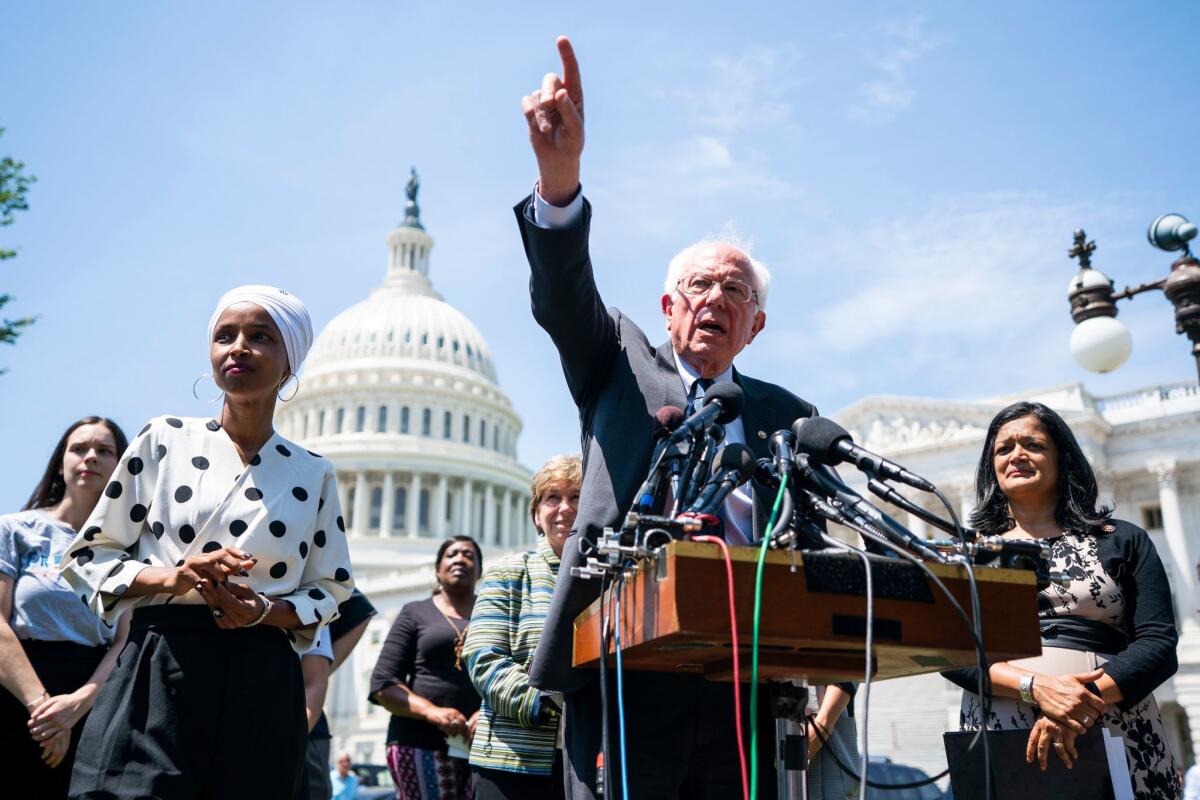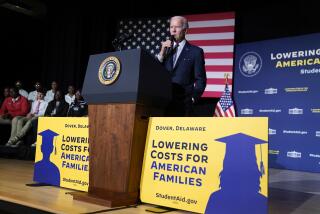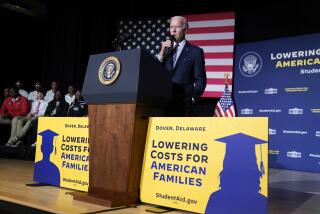Editorial: Student loan forgiveness should benefit the neediest first

The staggering student loan debt in this country — estimated to be around $1.6 trillion — stymies much of its young population. Many borrowers are putting off having families because they can’t afford the expense of raising children. Nor are they buying houses or cars, which would boost the economy.
This has led some advocates to call for forgiving the debt, with President-elect Joe Biden vowing during his campaign to forgive up to $10,000 for each borrower. More liberal Democrats are fighting for up to $50,000, and the progressive wing says all existing debt should be canceled.
Such a bailout would be hugely expensive, though; forgiving up to $50,000 would cost about $1 trillion. A disproportionate amount of that relief would go to higher-wage earners, who are more likely to attend college, especially private college. And the money would help only this crop of debtors. Future students would still be on the hook.
There are many ways of providing relief to borrowers, but across-the-board forgiveness would be the least equitable and least cost-effective. Instead, the government should help the neediest graduates, those who lost their incomes during the pandemic and those who took steps to keep their debt low by attending public colleges and working through their college years. And it should fix an existing program to reduce payments that hasn’t been working at all.
Blanket forgiveness would be particularly problematic at a time when so many families are facing far bigger financial challenges than not being able to buy a house or car. The pandemic has left millions wondering where their next meal is coming from and how to keep a roof over their heads.
Proponents of debt forgiveness say it would boost the economy if borrowers could spend their income on other items. Forecasts on whether the country would gain more than it spends, however, are mixed. The other argument is that higher education is a public good, so its cost should be borne by the society that benefits from a well-educated population. That could well be true, but in that case, what’s needed is an attack on the cause of student debt, not the symptoms: It costs more to deliver a college education in this country than almost anywhere else in the world.
Many nations in Europe can offer free or very low-cost college education because they not only provide more public support, but also control costs. Students in Europe and Canada are far more likely than Americans to live at home and commute to school; class sizes are much larger, sports teams far fewer and ancillary services, a major factor in the cost of college in the United States, much scarcer.
Loan forgiveness also raises issues of inherent fairness. The people who acted in especially prudent ways — for example, by attending lower-cost schools and limiting their borrowing — are the ones who would end up getting little or no help.
Meanwhile, the nation would immediately start producing more graduates with insurmountable debt.
Of course, there are low-income students for whom no amount of frugality would make it possible to get through college without a loan — and these are the people who most need help. They can’t afford living expenses, even at home, or a few thousand dollars a year for college.
That’s why need-based relief, rather than broad loan forgiveness, is both prudent and warranted. But the Biden administration should also consider other ways of reducing the debt burden without breaking the bank.
The existing Public Service Loan Forgiveness program cancels the debt held by students who go into government or nonprofit work once they’ve made payments on their loans for 10 years. But the program has been a mess. People were paying off the wrong kinds of loan without realizing it, were misled into thinking they had a loan that could be forgiven, and in many cases their applications for relief were wrongly refused — in fact, only 1% were approved in the initial round. The first item of business should be to fix this.
Another program allows students to limit their loan payments to a percentage of their income, with any outstanding balance forgiven in 20 or 25 years. The biggest burden here isn’t the principal, it’s the way interest stacks up to perpetuate a borrower’s indebtedness. Lowering the interest rate would provide significant immediate relief and reduce defaults.
Again, forgiving student debt is a short-term fix. Ultimately, the answer lies in preventing crushing debt in the first place.
More to Read
A cure for the common opinion
Get thought-provoking perspectives with our weekly newsletter.
You may occasionally receive promotional content from the Los Angeles Times.










